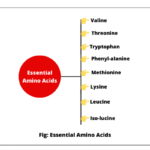30 MCQ on Preamble of Indian Constitution for Exams
Welcome to this challenging MCQ quiz based on the Preamble of the Indian Constitution. In this quiz, we’ve compiled the top 30 multiple-choice questions based on the Preamble of the Constitution of India. These MCQ quizzes will test your knowledge and boost your preparation for UPSC, SSC, RRB, and State PCS exams. You’ll get a scorecard at the end of the quiz to check your performance.
So, are you ready to score 30/30? Let’s find out how well you really know the Preamble of Indian Constitution. Let’s begin with question number 1.👇.
1. Which of the following words in the Preamble of the Indian Constitution was not added by the 42nd Constitutional Amendment, 1976?
A. Socialist
B. Secular
C. Dignity
D. Integrity
c
The 42nd Constitutional Amendment Act, 1976 (also called the “Mini Constitution”), added the words Socialist, Secular, and Integrity to the Preamble of the Indian Constitution.
2. The Preamble of the Indian Constitution is borrowed from which country’s Constitution?
A. USA
B. UK
C. Canada
D. France
a
The idea of a Preamble in the Indian Constitution was borrowed from the United States of America. Other features like liberty, equality, and fraternity were influenced by the French Revolution.
3. At the time of enactment of the Constitution, which one of the following ideals was not included in the Preamble?
A. Liberty
B. Equality
C. Socialist
D. Justice
c
The word Socialist was added later by the 42nd Constitutional Amendment Act, 1976. Originally, the Preamble had Justice, Liberty, Equality, and Fraternity.
4. The Preamble to the Constitution declares India as a:
A. Federal, Socialist, Secular, Republic
B. Sovereign, Socialist, Secular, Democratic, Republic
C. Sovereign, Federal, Socialist, Republic
D. Democratic, Secular, Federal, Republic
b
The Preamble declares India as a Sovereign, Socialist, Secular, Democratic Republic. The words “Socialist” and “Secular” were added by the 42nd Amendment (1976).
5. Which one of the following words is not used in the Preamble to describe India?
A. Socialist
B. Secular
C. Republic
D. Federal
d
The Preamble does not use the word Federal. Instead, Article 1 describes India as a Union of States.
6. What does the word “Sovereign” in the Preamble of Indian Constitution mean?
- India is a free and independent nation.
- India is free from any external control.
- India can make its own laws without interference from any foreign power.
- India has a federal structure.
Choose the correct code for the correct answers.
A. Only 1 and 2
B. Only 1, 2, and 4
C. Only 1 and 3
D. Only 1, 2, and 3
d
Sovereign means that India is a free and independent nation, free from any external control in both internal and external matters. India can make its own laws without the interference of any foreign authority.
7. The term “Republic” in the Preamble to the Constitution of India means:
A. Head of the State is elected.
B. Rule of majority community.
C. Independent judiciary.
D. Freedom of religion.
a
In the Preamble to the Constitution of India, the term “Republic” means India has an elected head of State (President), not a hereditary monarch.
8. In which amendment, the words “Socialist”, “Secular” and the phrases “Unity and Integrity of the Nation” added to the Preamble of the Constitution of India?
A. 42nd
B. 44th
C. 52nd
D. None of these
a
The 42nd Amendment, 1976 added the words “Socialist, Secular” and the phrase “Unity and Integrity of the Nation”.
9. In which of the following cases did the Supreme Court hold that the Preamble is not a part of the Constitution?
A. Kesavananda Bharati vs. State of Kerala (1973)
B. Berubari Union Case (1960)
C. Golaknath vs. State of Punjab (1967)
D. Indira Gandhi vs. Raj Narain (1975)
b
In the Berubari Union Case (1960), the Supreme Court held that the Preamble is not a part of the Constitution. However, later, in the Kesavananda Bharati Case (1973), the Court declared that the Preamble is a part of the Constitution.
10. Who moved the “Objective Resolution” in the Constituent Assembly, which later became the basis of the Preamble?
A. B.R. Ambedkar
B. Rajendra Prasad
C. Jawaharlal Nehru
D. Sardar Patel
c
Jawaharlal Nehru moved the “Objective Resolution” in the Constituent Assembly on December 13, 1946, which later became the basis of the Indian Constitution’s Preamble.
11. The words “Liberty, Equality, and Fraternity” in the Preamble were inspired by which revolution?
A. American Revolution
B. Russian Revolution
C. Irish Revolution
D. French Revolution
d
The ideals of Liberty, Equality, and Fraternity were inspired by the French Revolution (1789).
12. Which of the following is not mentioned in the Preamble of the Indian Constitution?
A. Justice
B. Liberty
C. Equality
D. Adult Franchise
d
Adult Franchise (voting rights) is given under Article 326, but it is not mentioned in the Preamble.
13. Which of the following words in the Preamble signifies that India is free to conduct its internal and external affairs without interference?
A. Sovereign
B. Republic
C. Socialist
D. Secular
a
Sovereign means India is free from external control, and has complete authority over internal as well as external matters.
14. Who is considered the architect of the Preamble of the Indian Constitution?
A. Mahatma Gandhi
B. B.R. Ambedkar
C. Rajendra Prasad
D. Jawaharlal Nehru
d
The Objective Resolution, moved by Jawaharlal Nehru in 1946, became the basis of the Preamble. It was later adopted in the Constitution in 1950.
15. The Preamble of the Indian Constitution begins with which words?
A. India, that is Bharat
B. Union of States
C. We, the People of India
D. Sovereign Democratic Republic
c
The Preamble of the Indian Constitution begins with the words “We, the People of India”. These words signify that the Constitution’s ultimate authority and power are derived from the people of India, establishing the principle of popular sovereignty.
16. The Preamble of the Indian Constitution was adopted on:
A. 15th August 1947
B. 26th January 1950
C. 26th November 1949
D. 30th January 1950
c
The Preamble of the Indian Constitution was adopted by the Constituent Assembly on November 26, 1949. However, it came into effect on 26 January 1950, along with the Constitution.
17. The ideals of social, economic, and political justice in the Preamble of the Indian Constitution are taken from:
A. USA Constitution
B. USSR Constitution
C. French Constitution
D. UK Constitution
b
The concept of social, economic, and political justice in the Preamble of the Indian Constitution is borrowed from the USSR Constitution.
18. Who said that the Preamble is the “Identity Card of the Constitution”?
A. B.R. Ambedkar
B. Jawaharlal Nehru
C. Pandit Thakur Das Bhargava
D. N.A. Palkhivala
d
An eminent jurist and constitutional expert, Nani Palkhivala referred to the Preamble as the “Identity Card of the Constitution”.
19. Which of the following is a correct feature of the Preamble?
A. Justiciable
B. Source of Fundamental Rights
C. Non-justiciable
D. Legally enforceable
c
The Preamble cannot be enforced in a court of law. It is non-justiciable.
20. Which term in the Preamble ensures that all religions are treated equally by the State?
A. Democratic
B. Republic
C. Secular
D. Sovereign
c
In the Preamble of the Indian Constitution, the term “Secular” means the State has no official religion. The state regards religion as a private affair of the citizen and does not discriminate on this basis.
21. The word “Fraternity” in the Preamble of the Indian Constitution means:
A. Brotherhood and sisterhood among all citizens of India.
B. Freedom of religion
C. Federal structure of India
D. Both A and B
a
In the Indian Constitution’s Preamble, fraternity signifies brotherhood, unity, and national integration among citizens.
22. Who said that the Preamble is the “political horoscope of the Indian Constitution”?
A. B.R. Ambedkar
B. Pandit Nehru
C. Thakur Das Bhargava
D. K.M. Munshi
d
KM Munshi described the Preamble of the Indian Constitution as the “political horoscope” of the Constitution.
23. The Preamble to the Constitution of India secures liberty of:
A. Speech, Movement, Equality, Justice
B. Religion, Politics, Press, Equality
C. Education, Property, Profession, Family
D. Thought, Expression, Belief, Faith, Worship
d
The Preamble to the Indian Constitution secures the liberty of thought, expression, belief, faith, and worship for all citizens.
24. The Preamble was amended only once in history. In which year this happened?
A. 1951
B. 1976
C. 1985
D. 2002
b
The 42nd Constitutional Amendment Act, 1976 is the only amendment that changed the words of the Preamble of the Indian Constitution. It added the words “Socialist” and “Secular” after “Sovereign”. It added the word “Integrity” after “Unity”. This amendment changed the phrase “Unity of the Nation” to “Unity and Integrity of the Nation”. Therefore, the 42nd Constitutional Amendment Act is also called the “Mini-Constitution” because it made extensive changes in several parts of the Constitution.
25. What was the exact constitutional status of the Indian Republic on 26 January 1950, when the Constitution was inaugurated?
A. A Sovereign Democratic Republic
B. A Sovereign Socialist Secular Democratic Republic
C. A Sovereign Democratic Republic with a Federal Structure
D. A Union of States with Sovereign Democratic Republic status
a
On 26 January 1950, the Constitution of India came into force. The original Preamble declared India to be a Sovereign Democratic Republic, ensuring justice, liberty, equality, and fraternity.
26. Which Amendment Act introduced changes in the Preamble to the Constitution of India?
A. 24th Amendment Act, 1971
B. 38th Amendment Act, 1975
C. 40th Amendment Act, 1976
D. 42nd Amendment Act, 1976
d
The 42nd Constitutional Amendment Act, 1976 (also known as the “Mini-Constitution”) is the only amendment that changed the Preamble.
27. The ideals and objectives outlined in the Preamble of the Indian Constitution have been further elaborated in
A. the chapter of Fundamental Rights.
B. the chapter of Directive Principles of State Policy.
C. the chapter on the Directive Principles of State Policy, Fundamental Rights, and Fundamental Duties.
D. nowhere else in the text of the Constitution.
c
The Preamble declares the objectives of Justice, Liberty, Equality, and Fraternity. These objectives are elaborated in Fundamental Rights, Fundamental Duties, and Directive Principles of State Policy.
28. Which one of the following words was not included in the Preamble of the Indian Constitution in 1975?
A. Fraternity
B. Sovereign
C. Equality
D. Integrity
d
The original Preamble in 1950 included the words Sovereign, Democratic, Republic, Justice, Liberty, Equality, and Fraternity. The word “Integrity” was not part of the Preamble in 1975. It was added later by the 42nd Constitutional Amendment Act, 1976, which changed “Unity of the Nation” to “Unity and Integrity of the Nation”.
29. Consider the following statements about the Preamble of the Constitution:
- The Objective Resolution proposed by Pt. Jawaharlal Nehru ultimately became the Preamble.
- It is not justiciable in nature.
- It cannot be amended.
- It cannot override the specific provisions of the Constitution.
Select the correct answer from the codes given below:
A. 1, 2 and 4 only
B. 1 and 2 only
C. 1, 2 and 3 only
D. 2, 3 and 4 only
a
Statement 3 is incorrect. The Supreme Court in the Kesavananda Bharati case (1973) held that the Preamble is a part of the Constitution and can be amended, but without altering the basic structure. The 42nd Amendment (1976) amended it by adding “Socialist”, “Secular”, and “Integrity”.
30. Consider the following words:
- Socialist
- Democratic
- Sovereign
- Secular
Choose the response that gives their correct order in the Preamble of Indian Constitution.
A. 3, 1, 4 and 2
B. 3, 4, 1 and 2
C. 3, 4, 2 and 1
D. 4, 1, 3 and 2
a
After the 42nd Constitutional Amendment Act, 1976, the Preamble of India begins with the following order: Sovereign → Socialist → Secular → Democratic.
Quiz Results
Total Questions: 0
Correct Answers: 0
Incorrect Answers: 0
Score: 0%






